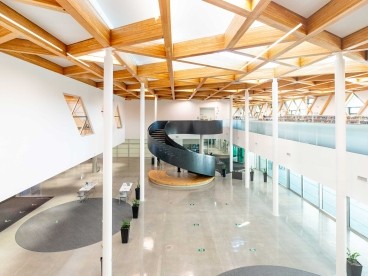Hidden Emissions of the Cloud: Examining Embodied Carbon and Cost Impacts of Data Center Cooling Technologies

The surge in data centers, driven by the exponential growth in digital data and cloud services, has sparked concerns about their environmental footprint.
THE CHALLENGE
Data centers are large consumers of energy owing to the high amount of computing power required to operate servers and networking equipment. Additionally, significant cooling is needed to maintain optimal indoor temperatures to keep these servers and networking equipment operational.
With the megawatts of power required to operate these data centers, a significant focus of the industry within the last decade has been to improve energy efficiency, thereby reducing operational carbon. This has led to innovations in cooling technologies, such as immersion cooling.
However, traditional cooling techniques such as evaporative cooling and air-cooled chillers remain popular mechanical design options. While the operational carbon impacts of these technologies are widely studied, there is still a lack of knowledge on their embodied carbon impacts.
Hear from author, Kanika Sharma, to learn more about this work.
THE STUDY
This study proposes a holistic approach to data center sustainability, one that conscientiously addresses both operational and embodied carbon emissions. It delves into a crucial yet often overlooked aspect - embodied carbon emissions associated with data center MEP (mechanical, electrical, plumbing) equipment over their life cycle.
To understand this aspect, the study centers around a hypothetical 200,000 GSF data center in Portland, Oregon, evaluating three distinct mechanical cooling technologies and their associated embodied carbon emissions:
-
AIR COOLED CHILLERS
-
EVAPORATIVE COOLING
-
IMMERSION COOLING
The study highlights the critical role of MEP equipment in shaping embodied carbon emissions throughout a data center’s 60-year life cycle.
KEY FINDINGS
The findings show that more than 90% of cumulative embodied carbon emissions are associated with MEP equipment. Moreover, over 95% of these emissions are associated with just the top ten mechanical and electrical equipment. While upfront embodied carbon emissions are significant, the majority of these emissions are attributed to the maintenance, repair, and replacement of the equipment over the building’s lifetime. Over a 60-year life cycle, 90% of data center embodied carbon emissions are associated with MEP equipment.
The surge in data centers, driven by the exponential growth in digital data and cloud services, has sparked concerns about their environmental footprint.
Read the Report
More About Impact Fund
Related News
-
Jul 12, 2024
Doing the Work in Regenerative Practice of working with Your Level of Energy
Insights & Perspectives -
Jul 11, 2024
Can We Keep Up with AI’s Rapid Growth?
Insights & Perspectives -
Jun 21, 2024
Engineering With Heart: Building Community Connections in Rwanda
Insights & Perspectives






